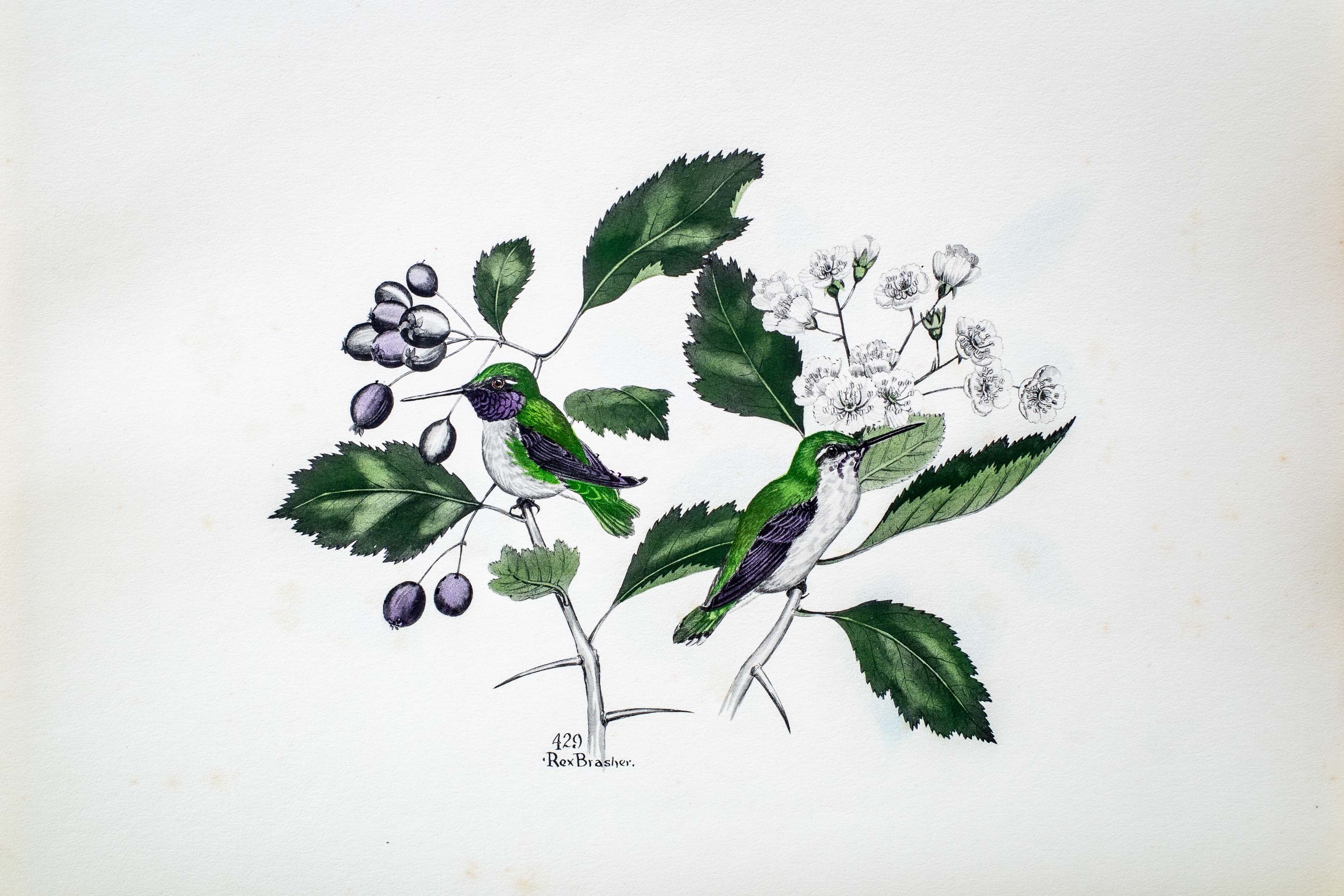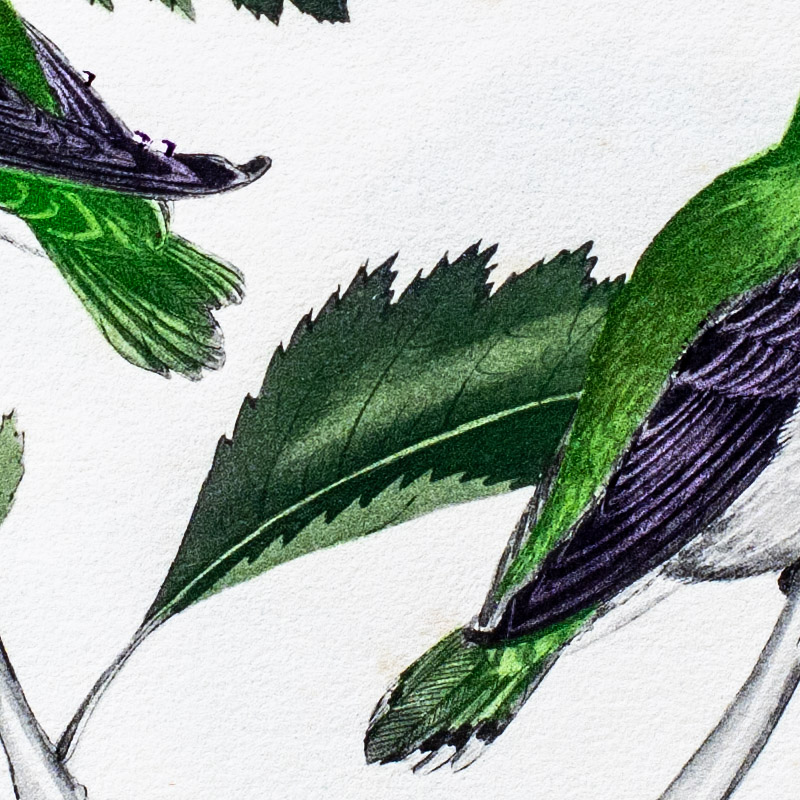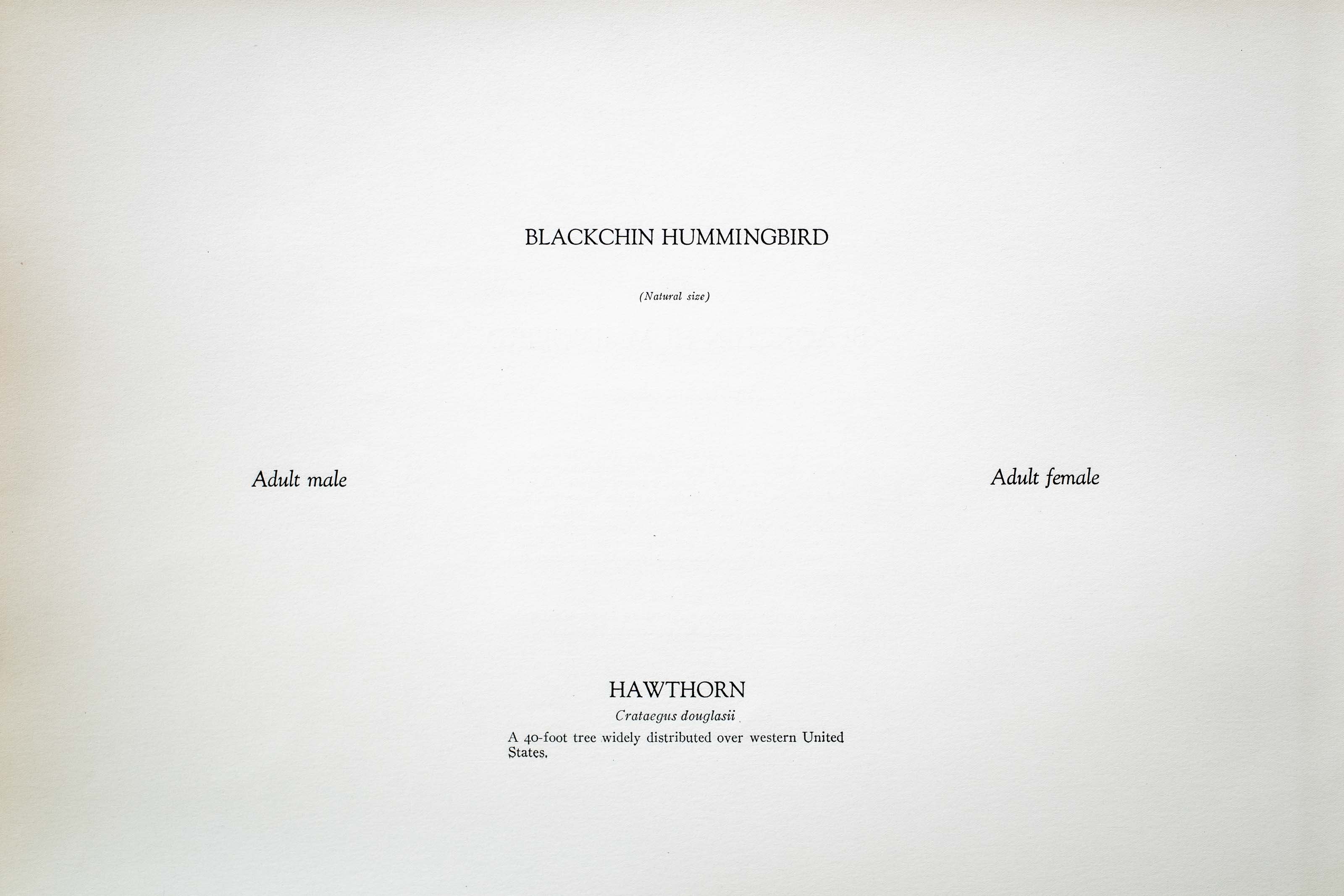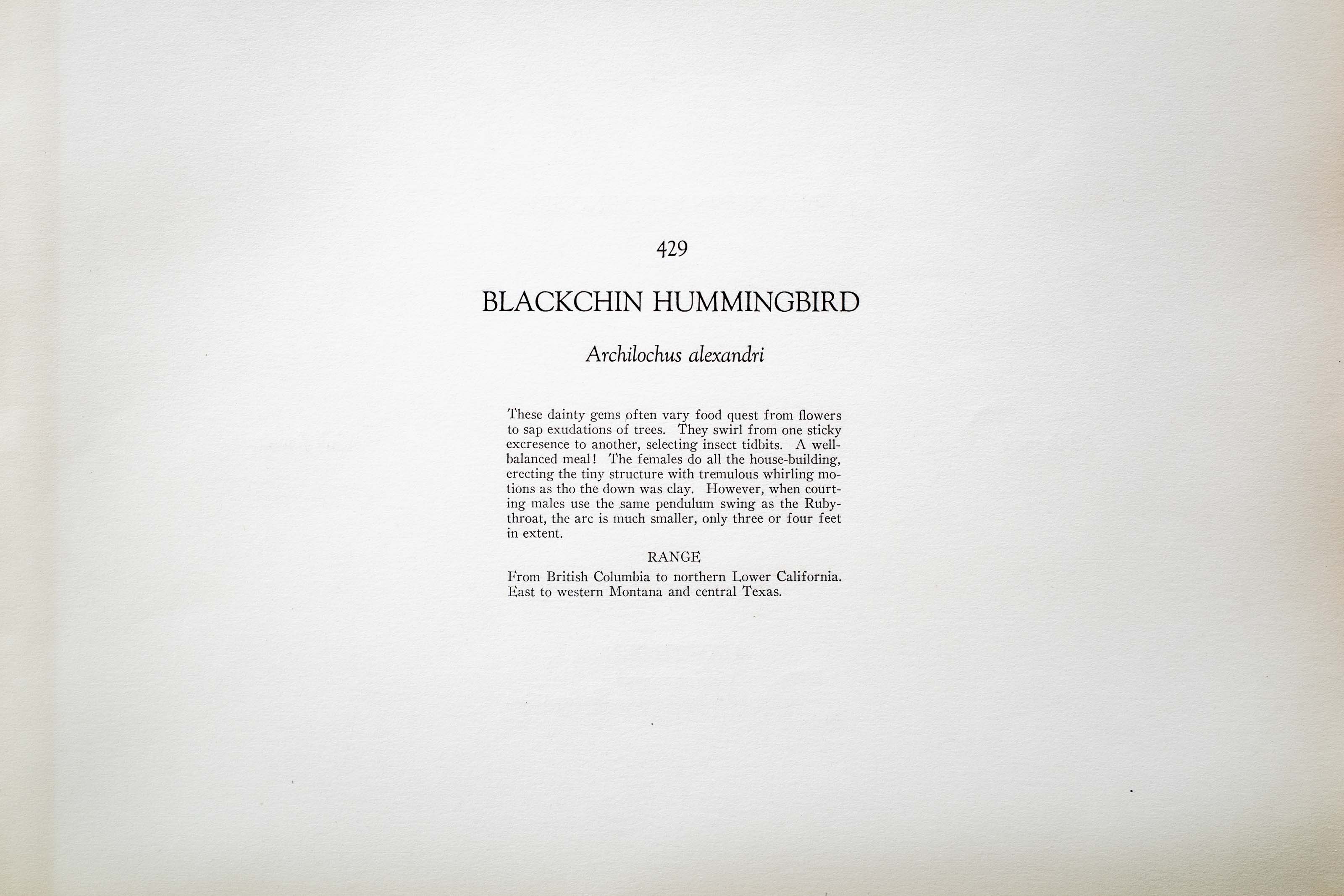






Unknown
1931
7
429
A team of dedicated board members, volunteers, and student interns has published every page in Volume 9. This volume includes 360 images of paintings and lyrical descriptions of birds, now available online for everyone to enjoy anywhere in the world. This is a monumental task. Each volume requires approximately 400 hours to photograph, edit, transcribe, catalog, and publish online. We need your support to complete this work.
If you're tech-savvy, have a good eye, are meticulous with details, and love structured data, please consider volunteering by emailing us at hello@rexbrasher.org.
We encourage all bird lovers and supporters to consider a monetary donation to support our mission to make Rex's work available for everyone. You can provide a one-time or recurring donation online.
These dainty gems often vary food quest from flowers to sap exudations of trees. They swirl from one sticky excresence to another, selecting insect tidbits. A well-balanced meal! The females do all the housebuilding, erecting the tiny structure with tremulous whirling motions as though the down was clay. However, when courting males use the same pendulum swing as the Rubythroat, the arc is much smaller, only three or four feet in extent.
From British Columbia to northern Lower California. East to western Montana and central Texas.
A 40-foot tree widely distributed over western United States.